Marketing
Content marketing is a marketing and business strategy focused on creating and distributing thoughtful, consistent and valuable content to an audience. The form, content and manner of the content provided are strictly dependent on the preferences of the target audience, their activities and values.
From this guide you will learn:
🡵 Summary
Today, the benefits of Content Marketing in B2B communications are being talked about more and more.
Interestingly, CM is related to the concept of Inbound Marketing, because the idea behind it is to create content that will be valuable to the audience, and the opposite - aggressive product communication. A long-term strategy of distributing content that is not pushy, but to some extent attractive to contractors, also translates into long-term business relationships. So how do you plan, execute and measure the effectiveness of such a strategy? What is a content matrix? Why is marketing automation so important? And how to acquire coveted leads through content?
Content marketing is a marketing and business strategy focused on creating and distributing thoughtful, consistent and valuable content to an audience. The form, content and manner of the content provided are strictly determined by the target audience's preferences, activities and values. Ultimately, content marketing is designed to drive new customers. In this guide, you will learn about how to generate new sales leads using Content Marketing techniques.
First of all, business customer behavior is changing. Traditional forms of outreach are no longer as effective as they used to be, although they are still an essential element of sales communication in many industries. Nonetheless, the process of reaching an audience today is very difficult. That is why a good content strategy is so important.
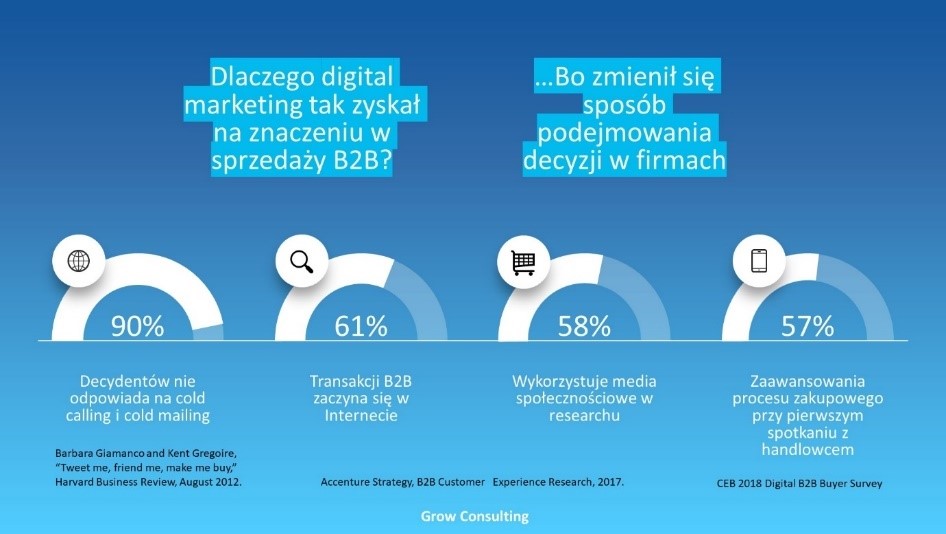
Nearly 60% of B2B transactions are said to originate online. To be more precise, the first stage of the process is usually simple research, but it is critical. Today's B2B customer is also much better prepared before speaking directly with a representative. He or she sometimes knows more about your business than you would expect. Therefore, if we want the customer-rep conversation to happen at all, we need to make our content, which the potential customer consumes at the research stage, more attractive. The primary function we must fulfill is to address the information need of the customer searching the Internet. Of course, it cannot be assumed that he will start his search by just checking out our product. This may happen when he wants to compare the activities of two companies offering a similar product. Usually, however, the customer will start his research with field inquiries and discussion forums.
From this article, you'll learn how to balance marketing and sales activities so that you can plan and execute the right content strategy geared toward generating sales leads. We will show you the tools we have tested to improve your marketing and sales processes. Good practices supported by theoretical knowledge are juxtaposed with examples from our own experience working with B2B brands.
We've broken down our brief guide to the process of building a content distribution strategy into four key stages:
Let's start with planning. There are many beliefs in the world of marketers about its validity. We stand firmly on the side of a good and well-thought-out strategy. You can find a separate articleon our blog on why you should plan your content. As for the planning methods themselves, on the other hand - there are many. We'll tell you about a few that we've tested ourselves.
The basic technique we use is the micro-tasking technique. The way it works was borrowed from Prof. Christensen and its English name is "Jobs to be Done." It is based on the concept that the customer, in the perspective of the whole process, before making a final decision to buy, must complete a certain list of small tasks in sequence. An example would be when, for example, a company's CEO orders his accountant to purchase new accounting software. Despite the fact that the employee uses such software on a daily basis, buying a new one that meets all the conditions can cause her a lot of trouble. Problems will arise at the very stage of searching for information. In smaller companies, this is often how tasks are carried out and distributed.
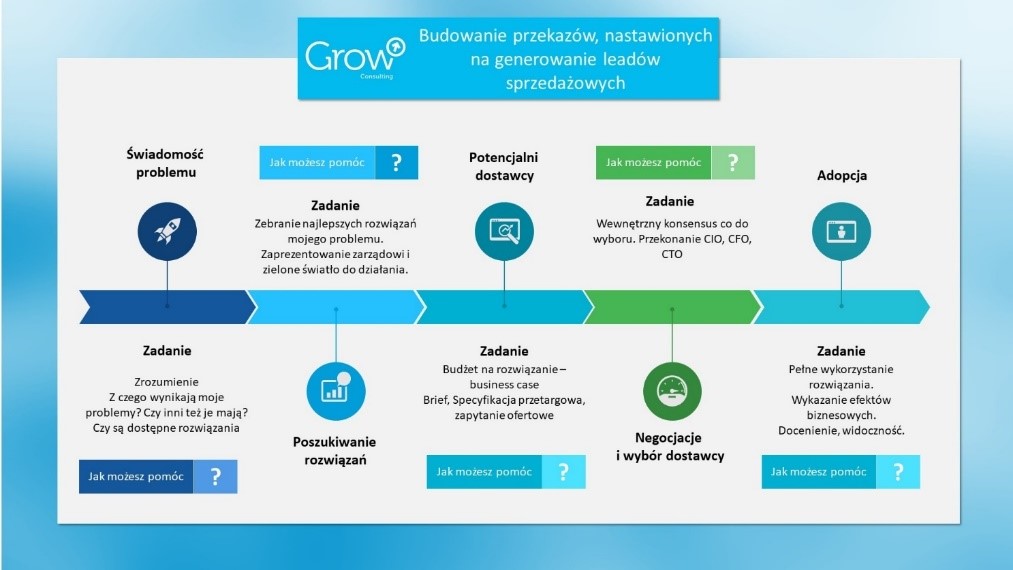
Obtaining information on the selection of a solution is just an example of micro-tasking. Analyzing the functionality of a given product and comparing it with the company's needs will be the next step. Each of such micro-tasks requires a certain amount of work and time. This is a great opportunity to meet the expectations of the person responsible for buying the product. When planning the creation of your content, we should consider how we can reduce the work time of such a person, think about what micro-task we can do for him. A ready-made presentation for management with a description of functionality? That's just an example of valuable content for a potential customer. At the same time, we, as distributors, can charge certain data, such as email address, position, company, in exchange for providing such content.
At this point, we caution against judging customer microcontent "by eye." Sometimes marketers or salespeople think they can anticipate these tasks. Not always. We recommend two methods we've tested for discovering customer micro-tasks.
It is described in Marcus Sheridan's book, " They Ask You Answer." Sheridan recommends writing down all customer questions, in whatever form they come in (hotline, business meetings, etc.). He stresses that these questions should be transcribed verbatim, word for word. All questions asked are to appear on our list, with no exceptions. Why is this important? We usually tend to downplay simple questions. If we hear 10 simple questions and 1 difficult one, we will only remember the latter. Looking at it from a marketer's point of view, it is the "easy questions" that are not only the most frequently asked, but also the most important. Feel free to experiment with writing down all possible questions from your customers. You'll quickly notice that a significant number of them recur, and it's the ones that come up most often that should inspire your content creation. Since they will contain answers to the most frequently asked questions, there is no risk that they will not interest your audience.
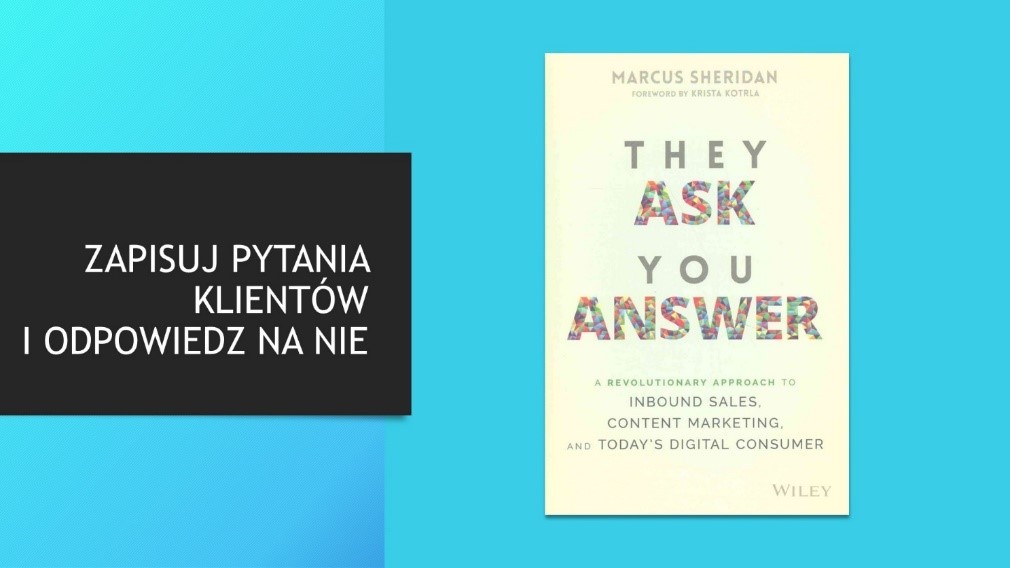
The second method is a tad more advanced. It is described in the book "Buyer Personas" (A. Revella, Buyer Personas, Hoboken NJ 2015). At Grow, we are certified in this method and use it in our work with medium and large companies. The main task is to determine the customer profile. The first question we ask ourselves is: What made the customer even start thinking about such a solution? (We mean the solution in general, not the product we offer.) Did something break? Have any regulations changed? Did competitors start using such solutions? We need to know the reason for the customer's desire to change something.
The second step of this method is to identify the factors that defined our success. Let's ask a question to our customer who made a purchase some time ago: How did he know that our product "worked"?
What is the purpose of this interview? First of all, to carefully analyze the customer's decision-making process. We need to catch some recurring elements and relationships that will be useful to us in further sales. It is also worth focusing on the barriers of the process at this point. We should also ask the customer about what "bothered" him in making the decision - what, on our part, did not meet his expectations and raised doubts.
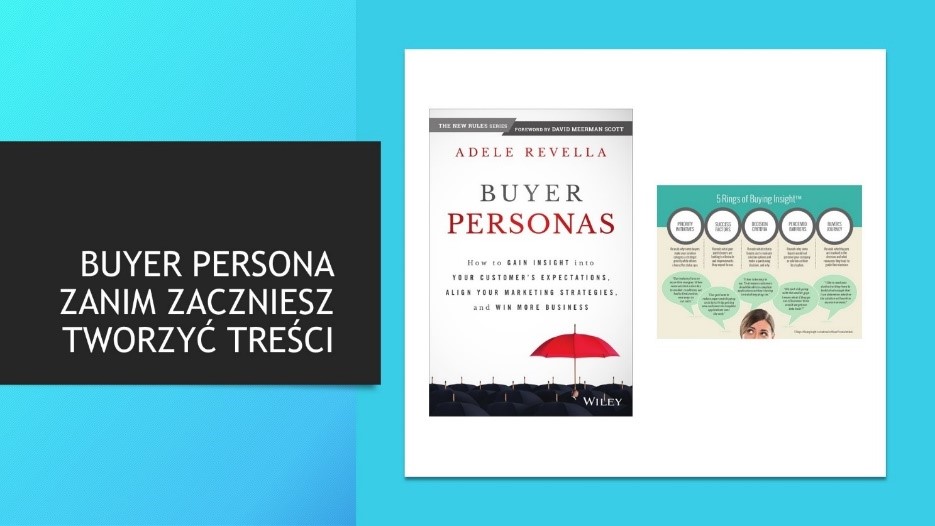
A content strategy matrix is a must
By analyzing the data acquired through customers, we know better their expectations and information needs. Now it's time for a content strategy matrix, which will help us use the customer knowledge we have researched.
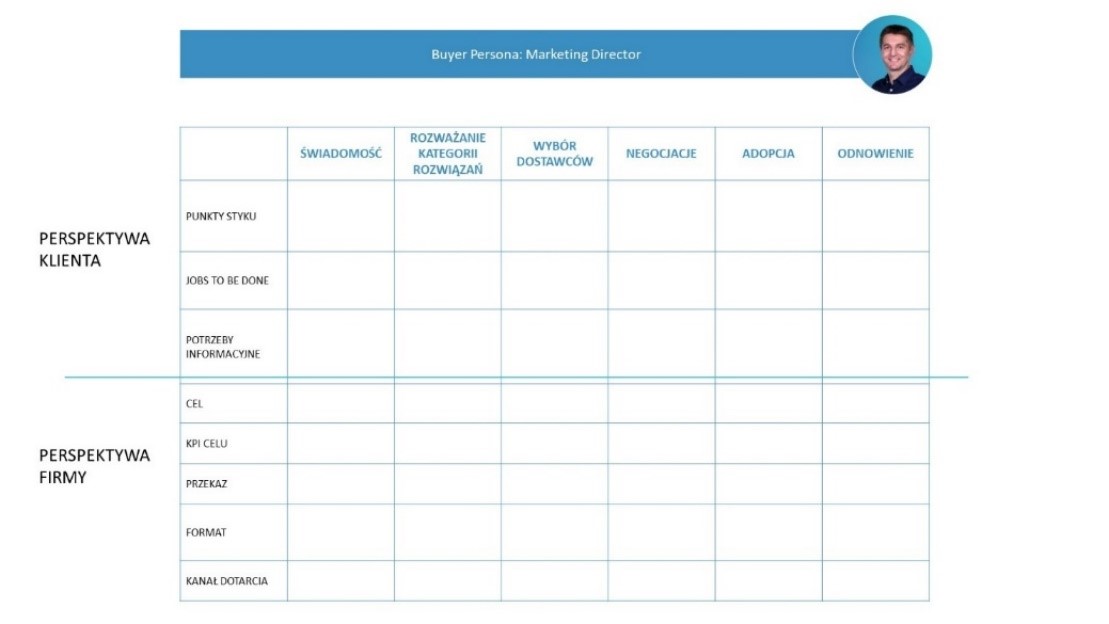
Such a matrix allows you to assess the decision-making process, notice the so-called "points of contact", the various tasks, the information needs, the purpose for which the content is geared, and finally - what will the message be - in what format and channel of outreach?
Developing a matrix allows us to create a plan for the next few or several months. So the next step will be a content calendar. At first, it doesn't have to be anything complicated. All we need is a simple table in which we organize our content, plan the date and time of publication, target audience, formats and people responsible for producing the material. A simple calendar is an effective way to organize and plan our ideas.
You already know how to plan content. Now we'll share with you ideas for producing them. The first element you should start with is working with internal experts.
You don't always have to use external sources. Ask for help from experts in your company. Of course, we can't force anyone to write a blog article, for example. Take programmers, for example - for most of them, writing is an unpleasant duty. However, if you realize that their knowledge can be the basis for creating some material, we have a simple method for you - an interview. For this you need an experienced person who will ask the right questions, draw out the information, and finally transform the conversation into written text. With this tactic of content creation, we must also remember to highlight the expert. Sign the author or co-author of the material, brag about it on LinkedIn or Facebook. Ask him or her to share the publications on his or her private LinkedIn profile.
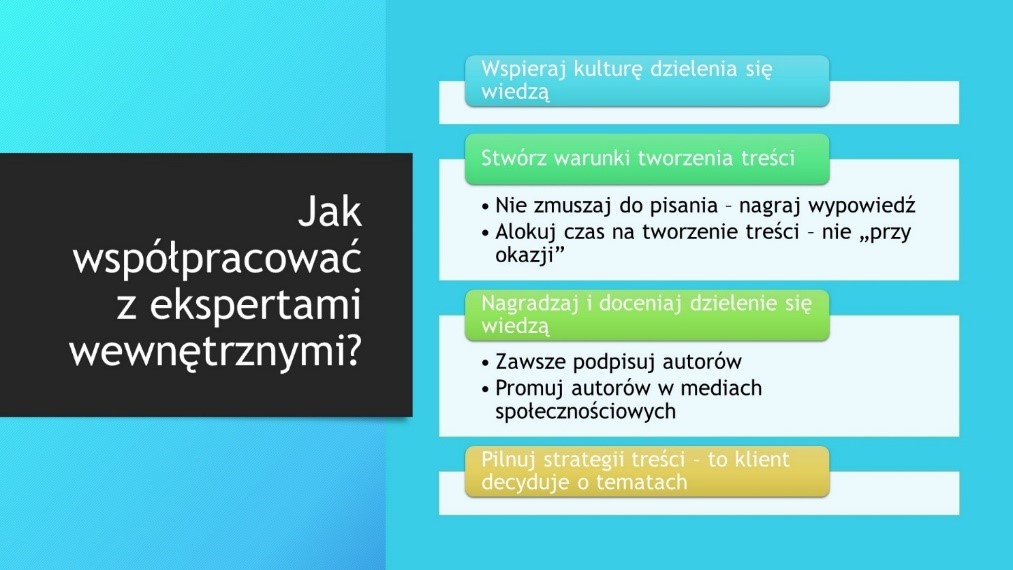
When using this method, you must also keep in mind the content plan. Don't give your expert any freedom in choosing a topic, stick to the preconceived structure of the publication.
What about the formats? What should you follow when choosing them? The first most important tip: don't create too many formats. If you are planning a content strategy and want to measure its conversion, it will be easiest to use two or three formats. This is because everything requires learning and time. The same is true for mastering formats. If you are just starting out with videos, it is very likely that initially, the content you publish will not be of very good quality. Patience!
Just how to choose the right format? To begin with, figure out what your audience's preferences are. E.g., if the audience of your content is supposed to be sales representatives who spend most of their time on the road, why not consider an audio option? E.g. a podcast, which has been very popular online lately.
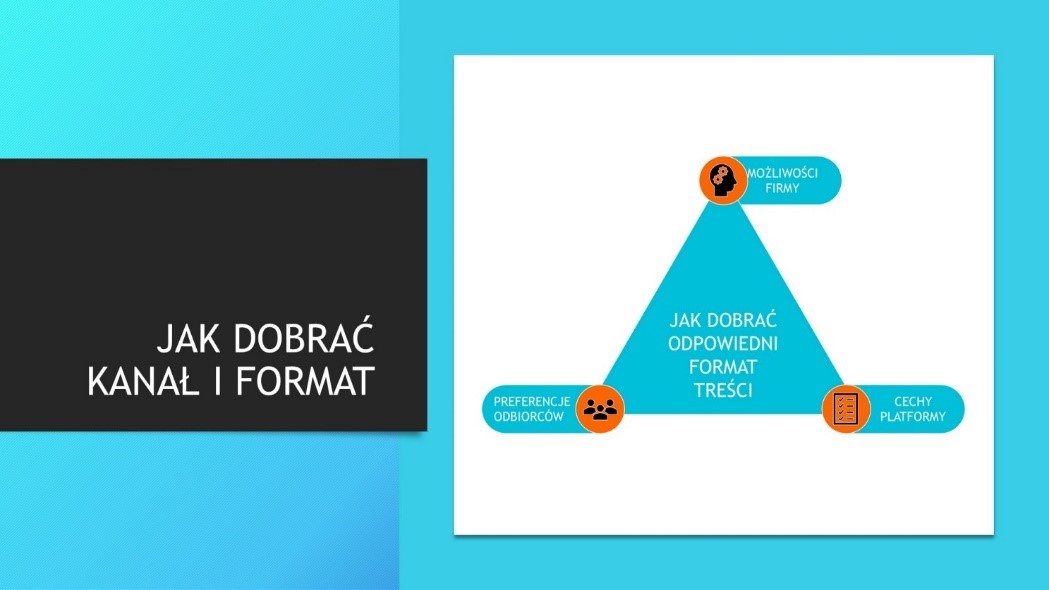
The second step is to analyze the company's capabilities. This simply involves assessing what you are capable of producing. Maybe your in-house experts like to speak and have no trouble performing in front of the camera? Or maybe you have a good copywriter who can perfectly translate the experts' thoughts into good text? Just consider what you are capable of producing well and efficiently. Don't kidnap yourself with a hoe in the sun.
The third element is the constraints placed by the platforms. If you run your own blog, these restrictions do not apply to you. You can choose for yourself what and how you want to post on your site. However, if you use social networks, you have to make your publications dependent on the services' preferences. These, in turn, have their own algorithms that affect the reach of the posts in question. Today, it is widely said that video content is well received on social media. This is true. If, on the other hand, you decide to publish a podcast, promoting it will be much more labor-intensive. It is worth mentioning at this point that lately social networks are also increasingly rewarding "live" publications. If you are able to create good quality material in this format, be sure to consider it.
Did you know that you don't always have to take the trouble to produce new materials? With help comes reformatting, or simply - reusing the same content. An example would be a webinar that combines live streaming, video and slides with text. You can reuse this material in many ways. You can split it into parts and publish it on YouTube. You can also make a transcription and rewrite the text into an e-book.
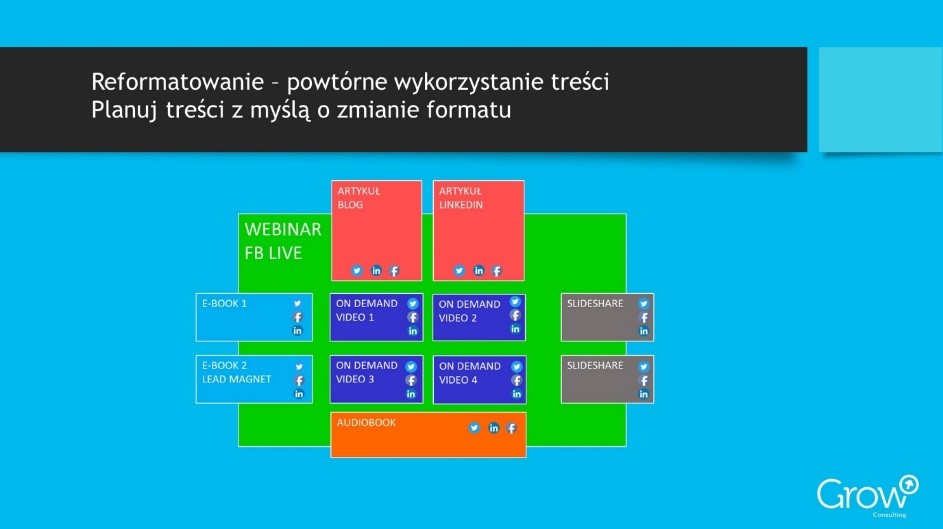
However, it is important to plan what format to transfer this content to before conducting the webinar. Why? If you would like to use this material as a podcast then not only the sound quality is important, but also what the presenter says - terms like "Look at the bottom right corner" can be difficult to remove during editing.
The end is most important
Once your content is produced, and the idea is at least in draft form - it's not over yet. Once again, take a look at everything. Sometimes it happens that the ideas we had at the beginning look completely different in the final stage. That's why it's ultimately worth asking yourself three questions. First - is this content still relevant to our buying persona (i.e., to that customer we identified at the planning stage)? Is our content too general? If we're not sure, let's narrow down our topic. Content should be precise - about specific people, specific roles, because then those people will respond to it. We must try to cut through the information noise.
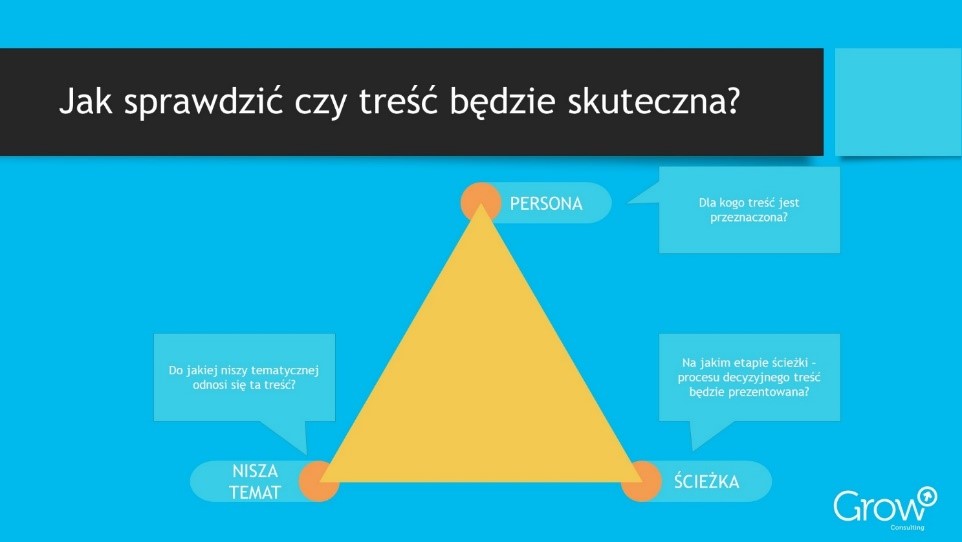
It is also worth considering whether your content fits into a given thematic niche, whether it succinctly describes the topic we have chosen as relevant. If the issues are too general and unspecialized, customers will not build an association of the topic with our company. Finally, consider whether the prepared material fits into any of the stages of the customer's decision-making process - branding, engagement, competitor comparison - can the content you prepare address any of these issues? Precision is the key to success. It will also help us when we want to evaluate the effect of our actions, for example, to determine at what stage of the decision-making process our customer, who is precisely the recipient of a given content, is - if he or she consumes material that corresponds to a comparison of suppliers in the market, we have a signal that our potential customer is already at an advanced stage of making a buying decision.
Extensive publications can be written on the subject of promotion. However, in this article we want to share with you some simplified strategy that, despite its simplicity, seems to be very helpful. We divide the strategy into two types of activities: long-term and short-term.
The former would certainly include positioning. Google and indexing mechanisms work in such a way that content, especially when it is updated, begins to gain value. Only well positioned content is visible in the long term, and this process even with the help of specialists takes months. For tips on writing effective SEO texts, see our article.
So this time is also worth using for short term promotion. We call these tools in working terms - active promotion. This type includes all activities such as promoting on social media, involving salespeople in our marketing activities, sending mailings or guest writing publications for other portals.
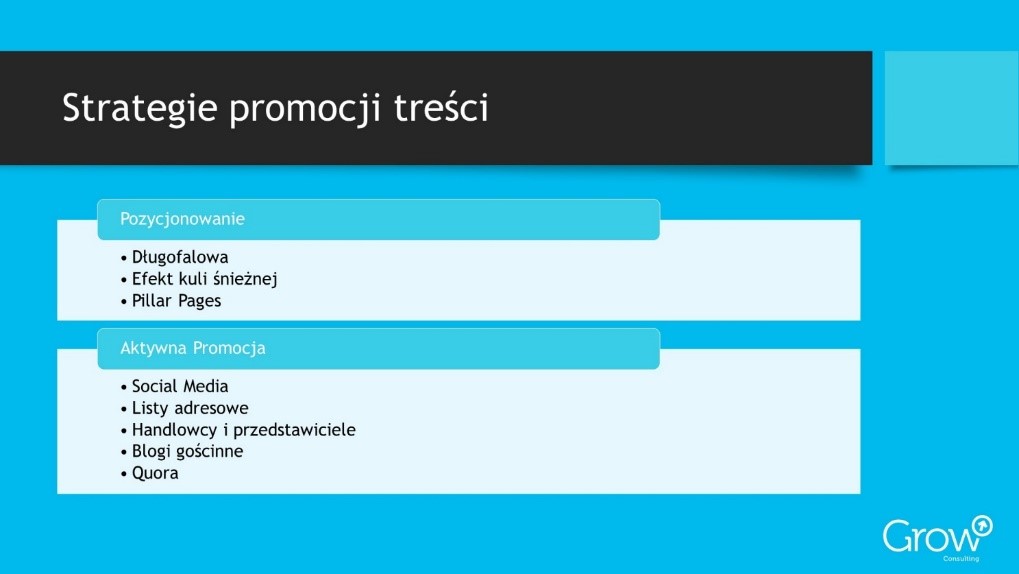
Core content includes those larger materials that we promote, such as a blog article, webinar or e-book. When devising a plan to promote this content, we also need to think about our budget. How to divide it? It is often heard that a good option would be to allocate 80% to production and the remaining 20% to promotion. However, if we don't have our own analysis, let's take a straightforward approach and divide it in half - 50:50. If our budget is 10 thousand, let's allocate 5 to content development and 5 to content promotion. Competition in the marketing communications market is so fierce that content without proper promotion won't be seen - even content that we have invested a lot in producing.
At this point, it is still worth mentioning that supportive content also needs planning. We should avoid a situation in which we have produced, for example, a very good e-book, and then we are surprised that no one downloads it. We should enjoy the benefits of free promotion on social networks and not end the publication of such an e-book with a single post on LinkedIn. This is definitely not enough.
What is this new structure about which there has been a lot of buzz in the content marketing world lately? We usually call a Pillar Page a polished version of: "a guide page," meaning one that discusses an issue in a complex way. Create a comprehensive guide to an issue you've identified as important to your customer. Help him make a good business decision. A Pillar Page is supposed to be a really elaborate structure, and it's worth taking care to build it, such as dividing the page into precise thematic sections. The idea is to build and develop content in a consistent way, which in itself will signal to Internet indexing tools that this is valuable material.
An example of a Pillar Page is our Guide to Marketing Automation. Also learn about Pillar Page examples from around the world presented by HubSpot.
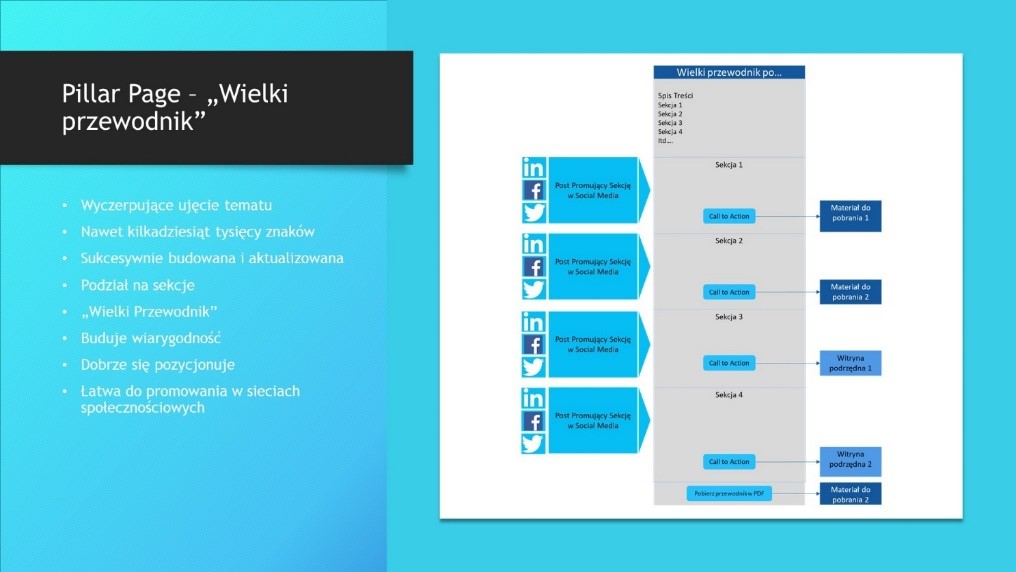
We are nearing the end. The last step of the strategy will be measurement and conversion. Measuring the effectiveness of your activities is just as important as producing them. This is an often overlooked step that requires good preparation. The basic preparation is to assume that there is no content that is not embedded in some stage of the customer decision-making process. If we have content that we can't properly embed, then let's rework it, not use it in such an under-prepared form. This can negatively affect the customer, who will start reading the incomprehensible content and will not know what to do next. When developing content, we must try to anticipate at what stage of the decision-making process it will be useful to the customer.
We often see the division of the sales funnel (Funnel) into: Top Funnel, Medium Funnel, Bottom Funnel. Top means very general content, which is supposed to bring us customer traffic (often anonymous). Miedium Funnel, this is the content that already helps customers in some way to move from the consideration stage to the decision stage, and well, Bottom Funnel which is content centered around the sales product. What is a big problem for companies? The fact that there is no intermediate content, i.e. it is relatively easy for us to develop general content: "Everything you need to know about...", "Ten good practices..." and other such publications. It's also easy for companies to create product content, since it's often already somewhat ready. The big problem in conversion, on the other hand, is in the middle of this funnel. There are many large companies that actually produce huge amounts of content, such as educational content, but fail to convert from it to sales support. We call this the conversion chasm.
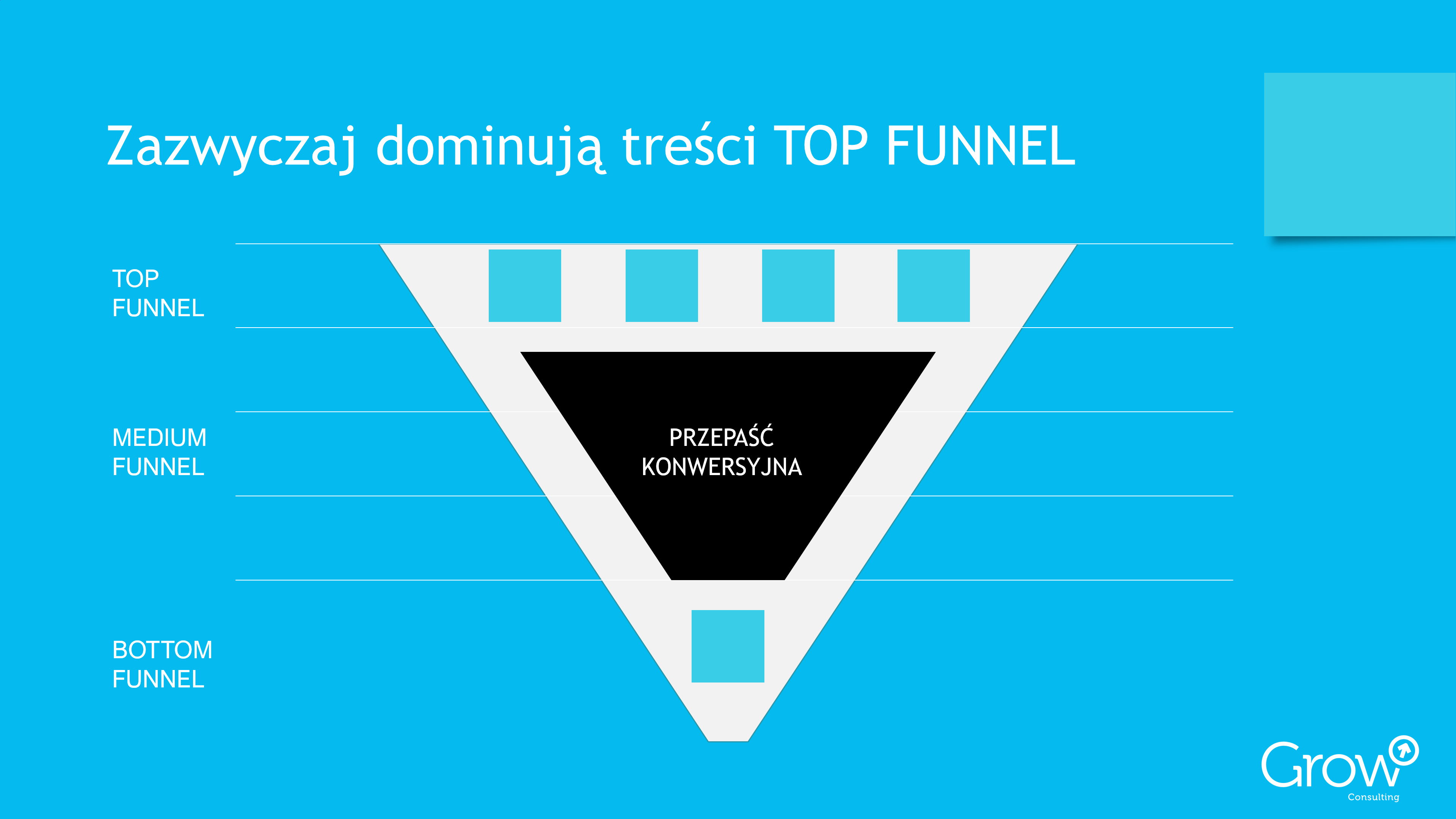
We are committed to translating this extensive educational content into other content related to the next stage of the decision-making process. So what to create at the so-called "middle stage"? We return to the section on content planning - defining buyer persona, path analysis, defining the information niche - these are elements that we must not overlook at the planning stage. We also emphasize that completing this funnel does not usually mean increasing the investment in content, but spreading the emphasis. There may be such a fear that if we reduce our amount of educational content, the top of the funnel will be "narrowed" at the same time. This will happen, yes, but it's worth pointing out that in B2B it's much more important to ensure conversions (i.e., to guide the customer in that decision-making process) than to acquire large amounts of leads or site traffic that don't convert. This may not even yield results, but may even generate costs: For example, if you are building your address base and have a marketing automation tool, you may find that you are actually spending too much on records.
So it is much more cost-effective to "narrow down" the top of the funnel, but prepare content that converts.
However, if marketing automation solutions are black magic to you, be sure to read this article, which tells you how to prepare properly for the introduction of such solutions.
Formats must be properly laid out along the customer's decision path. If we are already at the stage of establishing a relationship with a customer, we are much more likely to use an email address, while if we are just starting out, it is better to use anonymous mechanisms or social media.
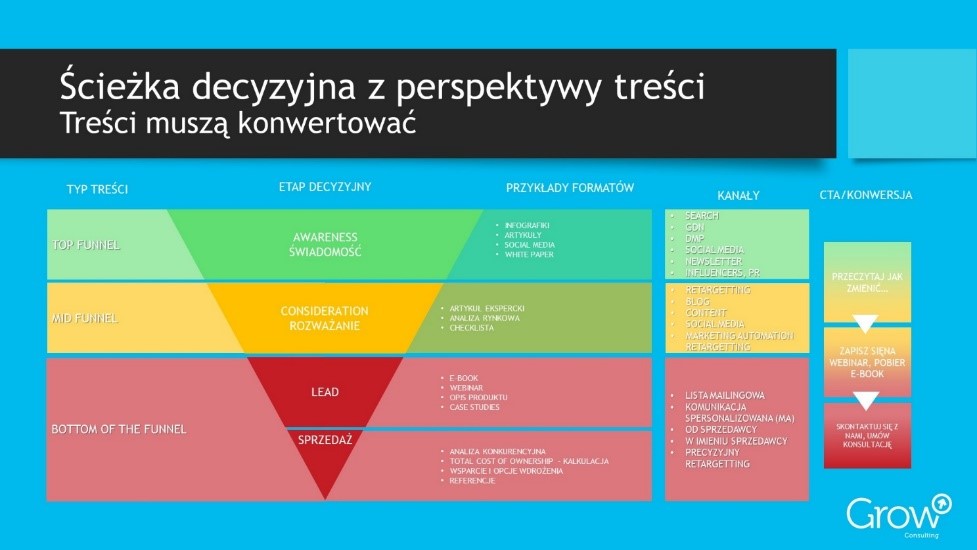
It is very important that for every piece of content we create, we develop a next step. Marketers call this a call to action. Content should not be separate islands, but individual steps in one larger process. If I have a good, awareness-building article at the top of the funnel, let's give the customer a chance to move to the stage of considering different solutions to review. Any content you create should direct the customer to take some next step. Customers sometimes say, "But there's a sales contact here after all" - The trouble is, if you have content very early in the decision-making process, a sales contact probably won't be the best proposition for the customer at this stage. Consider carefully what step you might suggest. Perhaps a downloadable PDF would be a good option? Signing up for a webinar? The main point is that this step to be taken by the customer should not be a "step across the chasm," but an activity that he can perform naturally. Provided, of course, that our content has piqued his interest.
You can't really do a decent content strategy that is geared toward conversion without using at least the simplest Marketing Automation system. Why? Without automation, we won't be able to measure the effects of our work. Our effort will be very high, with no way to verify whether it is paying off. These tools significantly facilitate the distribution of content. With their help, we can quickly create a landing page for downloading an e-book, or a form that collects data about participants. The data from the form can be used to send confirmations and thank-you notes. You can read about one of the Marketing Automation platforms that will help you measure the effectiveness of your work - Oracle Eloqua - in our blog article.
The second very important element of content strategy is integrating marketing with sales. This means that we can not only see what is happening with the leads that are later generated in the sales process, but also, for example, calculate the ROI of the investment (We can actually do this only when we combine this data, that is, when marketing is automatically combined with CRM). Collecting data with the help of automation tools is also a very valuable "information batch" for salespeople. If the salesman can see what sites the customer has been to before, what e-book he has downloaded, what webinar he has attended, he will be much better prepared to talk to the customer. The concrete benefits of using Marketing Automation are confirmed by various studies.
For example, a study by Nucleus Research shows that marketing automation increases sales effectiveness by 14.5% and saves 12% of marketing expenses.
Another study, by Annuitas Group , indicates a huge (451%) increase in qualified leads in the SMB sector, thanks to the ability to automatically nurture (nurture) them for weeks or even months. Importantly, the value of these leads is also increasing - they are, on average, 47% higher than leads generated by traditional marketing methods.
Salesforce's research confirms and completes the list of specific benefits you'll get by implementing a marketing automation system. Here are the most important results from implementing the system, according to Salesforce:
Of course, these results do not appear immediately. According to eConsultancy's research "Email Marketing Industy Census" (2017) - about 32% of companies see measurable sales results 12 months after implementing marketing automation. That's why it's important to strategize and plan so you're well prepared for the process.
We mentioned earlier one of the core functions of content which is the ability to qualify leads. Based on marketing interactions, we can assess the likelihood of success and take the next steps. E.g., if our potential customer has attended two webinars and downloaded three e-books, it means that we are able to qualify him or her as a lead to some extent, that is, to assess the probability of sales success. It is also a signal that we should inform our sales representative about the recipient's activities. Therefore, to truly understand the nature of a person's interest in your company, you will probably need to gather more information to determine whether the person is interested in your product or service and whether they are a good fit.
The more we know about our customer, the greater the chance that the sale will be successful. A content strategy, as you can see, fits perfectly into this plan. You need properly crafted content to support lead generation. With effective content marketing, you can reach your target audience, classify leads and increase conversions. There are several ways to do effective content marketing to increase revenue, brand awareness and recognition, and build relationships with potential customers. To get started, you need to determine what type of content works best for your business and your audience, and develop a content marketing strategy that will help you increase profits today. Creating your own strategy, based on the four steps of planning, production, promotion, measurement and conversion, will help you acquire new sales leads.
